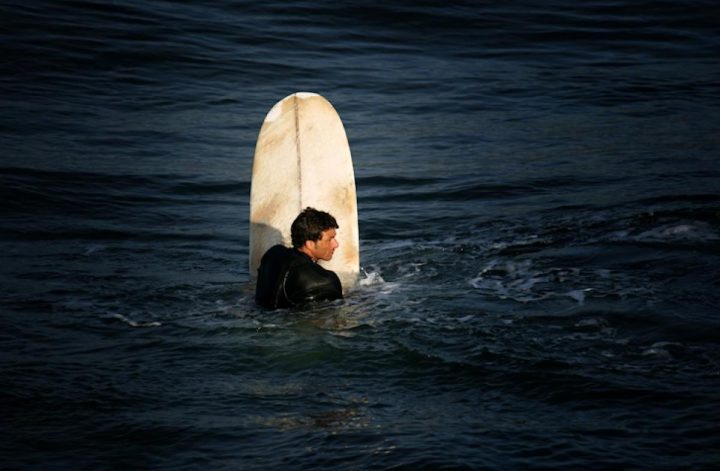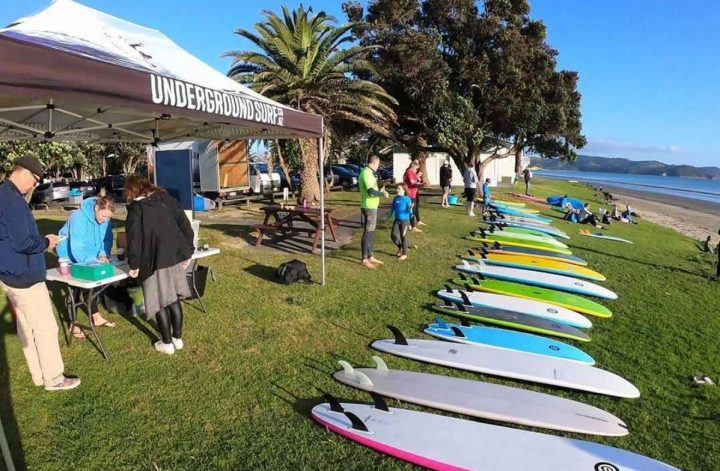We get this question a lot and, unfortunately, there’s no quick answer. So get comfy, settle in, chuck another log on that fire and get ready to learn everything you need to know about surfboard volumes.
What is Volume?
Let’s start at the beginning. The volume of your surfboard is a measurement of the total amount of space that your board takes up. If your board were a perfect cube, then a simple length x width x height calculation would be all we’d need. However, as your board is full of curves and concaves, the whole thing is a little more complicated. In the past, the only way of knowing was to dunk your board in a bath, and see how much water was displaced and this is why we normally measure surfboard volume in Cubic Litres rather than Cubic Inches.
These days, with most boards designed using computer software, it’s easy to calculate the volume of a finished board. Most surfboard brands display the volume of their boards on their websites and sometimes even on the surfboard itself.
As a general ballpark guide: an average shortboard would likely be around 25-35 litres, a 7’ softboard would be between 40-50 litres, a longboard might go from 60 to 100 litres, and a stand up paddle board could quite easily exceed 250 litres.

Why is Volume Important?
The most important thing volume tells us is how “buoyant” the surfboard will be, aka how well the board will float you in the water. Buoyancy matters because the higher a board floats you out of the water the less drag your body will create as you paddle. The less drag you have, the faster you’ll be able to go!
Generally, the faster you can paddle the more waves you can catch, and the less height those waves need to have in order for you to catch them.
However, board volume is only half the calculation, the other equally important part is the weight of the surfer: a heavier surfer will need more volume to create the same buoyancy.
This brings us to the key ratio between a surfer’s weight (in kilograms) and a surfboard’s volume (in litres), which is commonly expressed as a percentage. For example, a 70kg surfer riding a 35L board would have a ratio of 50%, whilst a 35kg surfer on the same surfboard would have a ratio of 100%.
Great, Now What?
Ha, good question. There aren’t any concrete rules when it comes to choosing a surfboard. Lots of people have learnt from day one on small shortboards, whilst others have specifically chosen to only surf large longboards, and people from both camps have gone on to be world champions! There’s always a huge amount of subjectivity in the final decision, and a board that one person loves might not suit another.
With all of that in mind, you shouldn’t set goals to reach a certain board size. Instead, you should view a manoeuvre as a goal.
A falsehood that has plagued surf culture for years is the idea that a smaller board makes a better surfer, and too many people view the size of their board as a badge of their skill in the water. The issue is that while a smaller board is, theoretically, easier to turn than a bigger one, it is also easier to create bad habits in your technique. In the long run these bad habits will hold you back a lot more than those extra 10 litres ever could. Boards that are too small will paddle slower, catch waves late, slow down in turns, and generally make your surfing look shabby. Boards that are too big only have one downside; if your technique is poor, you can’t cheat and try to shift the board round with your upper body. Small boards let you trim turns easier, which can fool you into thinking you’re carving better, but learning to carve turns is actually harder on a low volume board because you have less speed and lift.
The Conclusion
Above all, surfing is meant to be fun. It can also be one of the most frustrating sports to learn. The high level of technical precision required, added with the low repetition rates we get per session (plus the constant variations in our environment!) can make developing new techniques very difficult.
In our experience, the most common frustration in the water is using surfboards that don’t allow for error when developing your technique. Whatever the skill is, you don’t want small errors to cost you the whole wave or set because this will either push you towards “safety surfing”, or just leave you feeling deflated.
So here’s what you should do; use this info as a starting point to help you choose a board that will empower you to work on the specific techniques you want to add to your skill-set. And try to enjoy the many failures to come – don’t forget, sometimes it’s the journey not the destination that’s most important.



